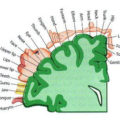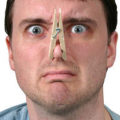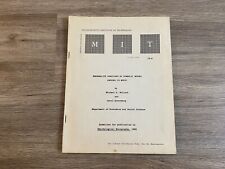
Women’s minds and genitals often disagree about sexual arousal, suggests a new meta-study that compared subjective ratings and physiological measures of sexual arousal in men and women. Published in the Archives of Sexual Behavior, the study confirms long suspected gender difference in the body’s responses to sexual stimuli.
Researcher Meredith Chivers, from Queen’s University in Canada, was interested in the degree to which an individual’s experience of sexual arousal mirrors physiological genital activity and whether gender difference in this agreement (commonly reported in individual studies) would be found in a meta-analysis of previous sexual psychophysiology studies.
To investigate, Chivers and colleagues reviewed 134 studies which measured the degree of agreement between subjective experiences of sexual arousal and physiological genital responses. Study participants indicated how aroused they felt during or after they were exposed to a variety of sexual stimuli, known as subjective arousal. Researchers also measured the physiological responses to the sexual stimuli, including changes in penile erection for men and changes in genital blood flow for women.
For the women, however, the responses of the mind and genitals were not as closely matched as men’s. The readings from the physiological measurements and their subjective ratings were, in some cases, significantly different.
The researchers then looked at factors in the studies that might shed some light on this gender difference. They identified two methodological differences that may play a role.
Interestingly, the type of sexual stimuli – their content and how it was presented e.g. visually or as an audio recording – made no difference to how well the subjective and physiological responses mirrored each other in men. However, it did influence women’s responses. Women exposed to a greater range and number of sexual stimuli – content and presentation – were more likely to have stronger agreement between subjective and physiological responses.
The timing of the assessment of self-reported sexual arousal also had an effect. When participants were asked to rate their subjective arousal at the end of each stimulus, men’s responses were closer to one another than women’s. However, when both men and women were asked to rate their arousal whilst they were exposed to the stimulus, the gender difference disappeared because men’s concordance dropped to the range of women’s.
“The assessment of sexual arousal in men and women… provides a method to assess and evaluate the treatment of sexual dysfunctions. Understanding measures of arousal is, therefore, paramount to further theoretical and practical advances in the study of human sexuality. Our results have implications for the assessment of sexual arousal, the nature of gender differences in sexual arousal, and models of sexual response,” Chivers concluded.
Related:
Steamy Camera Shoot Explodes Sexual Myth
Brain Mapping Of Sexual Arousal
Male impotence drugs beneficial for some women with sexual dysfunction
Archives of Sexual Behavior









Comments are closed.